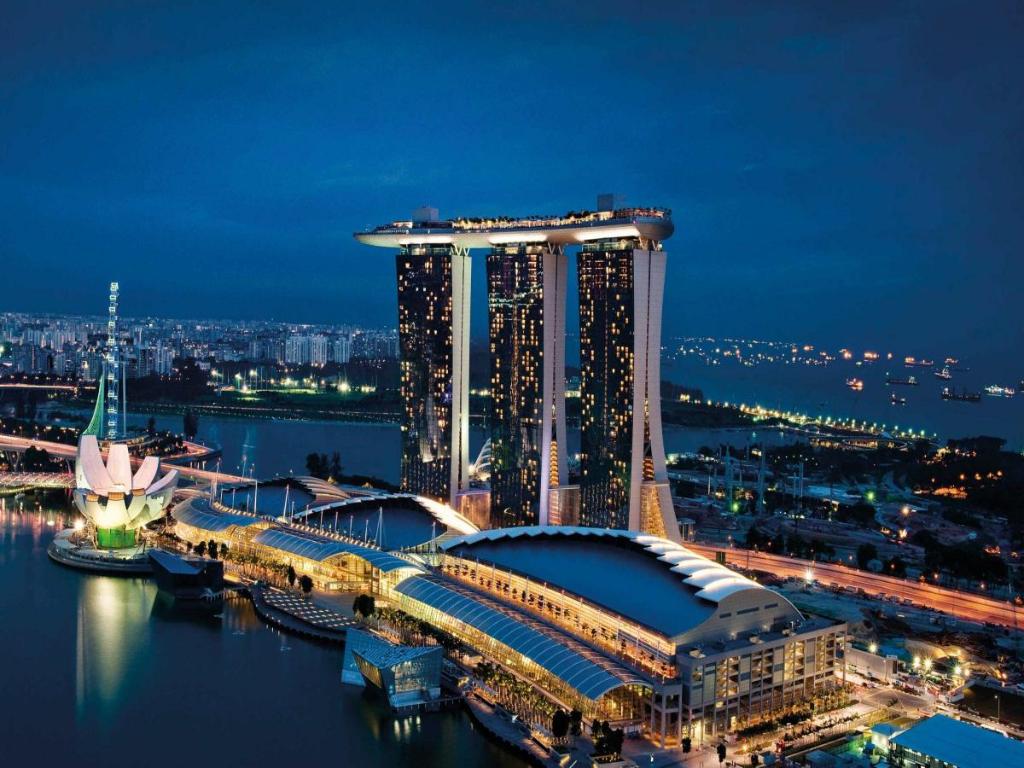MHI Group Delivers Two Large-Capacity Centrifugal Chillers for Singapore’s Marina Bay District Cooling System

- The high-efficiency chillers with low environmental impact will help expand Marina Bay’s district cooling system, which will service 28 buildings by 2026.
- High confidence in MHI Group’s technologies and after-sales servicing, chillers’ environmental and economic performance, and excellent delivery record led to the order.
Tokyo, October 4, 2022 – Mitsubishi Heavy Industries (MHI) Group companies – Mitsubishi Heavy Industries Thermal Systems, Ltd. (MHI Thermal Systems) and Mitsubishi Heavy Industries Asia Pacific Pte. Ltd. (MHI-AP) – have jointly delivered two large-capacity centrifugal chillers for a large-scale district cooling system in Singapore’s Marina Bay as part of plans to expand the system. The two chillers, offerings in the “GART series”, have a collective cooling capacity of 8,400 refrigeration tons (RT). and will bring the total number of centrifugal chillers provided by MHI Group to the Marina Bay area to 18.
The GART-400PLS.SCF model centrifugal chillers each have a cooling capacity of 4,200 RT, the largest capacity of all units delivered to the Marina Bay district cooling system to date. The new units can accommodate the HFO-1234ze(E) refrigerant, which is recognized for its extremely low environmental impact: a global warming potential (GWP) below 1(Note1). In addition, the GART-400PLS.SCF chillers have a near 6% higher rated coefficient of performance (COP)(Note2) and approximately 10% higher integrated part load value (IPLV)(Note3) than earlier models, enabled by the adoption of a tandem operating configuration resulting in reduced energy consumption. Carbon emissions can also be cut by 9%(Note4).
Marina Bay is Singapore’s central district for business and tourism and is part of the country’s plan for a sustainable live-work-play community. Designed, built and operated by SP Group, a leading utilities group and sustainable energy solutions provider in the Asia Pacific, the Marina Bay district cooling system is the world’s largest underground district cooling network. The system produces chilled water centrally at two plants, which serves the air-conditioning needs of over 20 buildings in the Marina Bay district. Centrifugal chillers are critical components of the plant as they are the high-efficiency heat source devices functioning at its core.
Undergoing continuous expansion, the system will service a total of 28 buildings by 2026 and will reduce approximately 20,000 tonnes of carbon emissions per year.
MHI Group was awarded the order based on its technological strength and after-sales servicing capabilities, as well as the environmental performance, economic benefits and high reliability of its centrifugal chillers – as proven through its excellent delivery record.
MHI Thermal Systems is Japan’s leading manufacturer of centrifugal chillers, offering a wide variety of models for applications including district cooling/heating and factory air-conditioning. The Chiller Business Unit was started in April 2008 in Singapore, and today the team handles related marketing and servicing at MHI-AP throughout Southeast Asia, responding efficiently to local customer needs. Going forward, both companies will continue to meet customer needs and deliver centrifugal chillers with minimal environmental impact to help realize a carbon neutral world.
- (Note1) CO2 is assigned a GWP of 1. The lower the GWP factor, the less impact there is on the environment.
- (Note2) COP designates energy consumption efficiency calculated based on rated conditions. COP = rated cooling capacity (kW) ÷ power consumption (kW). The higher a system’s COP, the more energy-efficient it is.
- (Note3) IPLV designates annual energy efficiency taking into consideration fluctuations in load and cooling water temperature over a one-year period of operation. The higher a system’s IPLV, the more energy-efficient it is.
- (Note4) Estimated with 3 conventional AART -280 PL.EX (cooling capacity: 2,800 RT) models based on the weather conditions in Singapore and the assumed load pattern of district cooling in Singapore.



















